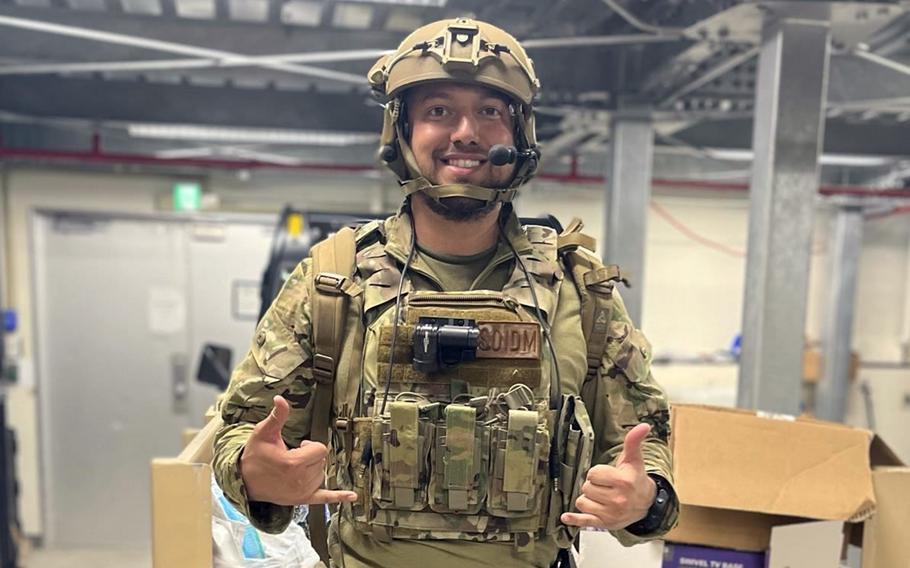
Project Lavoy medics test their new blood transfusion field kit during a casualty exercise at Kadena Air Base, Okinawa, Feb. 13, 2024. (U.S. Air Force)
A team of medical technicians at Kadena Air Base, Okinawa, has created an improved blood transfusion kit that they say will save lives in future conflicts.
Project Lavoy, an effort by the 18th Medical Group, has been testing the kit, which enables medics to collect blood and perform transfusions as quickly as possible after casualties occur.
“We are hoping to eventually gain funding and support to make this an Air Force-wide toolset that all Airmen can utilize to enhance life-saving capabilities,” Master Sgt. Jet Nesle, flight chief at the Regional Dental Laboratory, said in comments emailed Wednesday by the 18th Wing.
The project’s name pays tribute to Tech. Sgt. Zachary Lavoy, who died Nov. 29 alongside seven others when their CV-22B Osprey crashed off southern Japan.

Tech. Sgt. Zachary Lavoy died alongside seven other airmen when their CV-22B Osprey crashed off southern Japan, Nov. 29, 2023. (U.S. Air Force)
Blood loss accounted for 80% of deaths during the wars in Afghanistan and Iraq, Master Sgt. John Reeves, the noncommissioned officer in charge of the medical group’s chemistry department, said in the email.
“Personnel who experience this need blood immediately, not hours down the road,” he said. “By providing blood products at the point of injury, we can reduce the number of lives lost significantly.”
Project Lavoy adds equipment to the joint first aid kit already carried by Air Force medics, allowing them to perform blood transfusions in the field.
Lavoy, 33, of Oviedo, Fla., was a medical operations flight chief with Kadena’s 1st Special Operations Squadron. His help propelled the transfusion project forward, Maj. Geoffroy Johnson, 18th Dental Squadron prosthodontist, said in the email.
Lavoy was the first medic with extensive experience in field care and transfusions to respond when the project team, then called the Contingency Blood Program, sought expert support, Johnson said.
“TSgt Zachary Lavoy loved teaching, and was our lead cadre. … We decided to rename the project in his honor,” he said.
The project began last year as part of a Spark Cell initiative by the 18th Medical Group, Reeves said. Spark Cells are a network of Air Force bases where airmen may develop locally generated innovative ideas and projects.
Johnson said Reeves conceived the idea after going through numerous exercises at Kadena.
Reeves, a medical laboratory technician by trade, said he saw gaps that could be filled to ensure lives are saved during contingency operations. However, getting the project off the ground was a collaborative effort, Johnson said.
Project Lavoy drew in Air Force Special Operations Command, 31st Rescue Squadron, medical professionals and innovation experts, Reeves said.
To show proof of concept of its new system, the medical group between Feb. 29 and March 1 trained four medics and five nurses who lacked previous field transfusion experience.
The medical group plans more training to further develop the concept and show the ease and value of the blood transfusion kit.
“Our medics need to be able to perform this time sensitive life-saving task within the ‘golden hour,’ and Project Lavoy makes it easier to meet that timeline,” Johnson said.